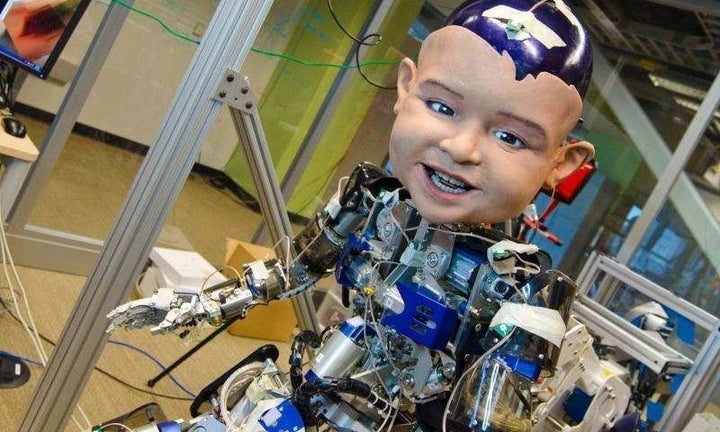
When cognitive scientist Dr. Javier Movellan watched his three-month-old baby Marina smile, he wondered if she was trying to communicate with him.
"I felt very strongly that this was happening but in the back of my mind I wondered whether I was just fooling myself," Movellan told The Huffington Post in an email.
Movellan and a team of researchers used data from a previous study to analyze the face-to-face interactions of 13 four-month-old infants and their mothers, and they recorded how often both the babies and their mothers smiled.
Their findings, which were published online in the journal PLOS One on Sept. 23, found that the babies didn't smile simply in reaction to their mothers. They smiled to get mom to smile back -- and they did so with the timing of a comedian. Specificially, the babies made their mothers smile as much as possible while smiling as little as possible themselves.
Being a scientist, who is also an expert in robotics, Movellan decided to further test his hypothesis -- and he did it with the help of a rather creepy robot programmed to behave like a baby. Check it out in this video:
So what does this robobaby tell us about how infants communicate? Quite a bit, actually. Using the bot, the researchers were able to confirm their earlier finding that babies don't smile at random. They smile purposefully to elicit positive responses from their moms.
"In early smile games, infants are far more active and intentional than previously thought," Movellan said. "They are active game players with their own agenda, rather than passive responders to what mom does ... We found that by four months of age, infants are amazing at timing their smiles to get you to do what they want you to do."
In other words, babies may have more agency in social situations than we usually give them credit for. It's not just mom who orchestrates an interaction with her baby -- her infant may in fact be the one running the show.
And here's where the robot came in. It was programmed to behave like the babies from the earlier study, and then interacted with a group of student volunteers during individual 30-minute sessions.
"When we 'transplanted' the strategies that infants use in smile games, into the robot, these strategies had the predicted effect," Movellan said. "They maximized the amount of time people smiled while minimizing the number of smiles that the robot had to do in return."
While a smiling robot baby may might not seem like a technology with a whole lot of practical use, the findings could open the door for scientists to create robots that mimic social interactions between babies and their parents. Such technology could one day help researchers to monitor children's social development.
"This opens new avenues to study atypical development," Movellan explained. "For example, do children with autism lack social intentions, or do they have different social intentions than typically developing children, or do they have the same intentions but they lack the means to achieve their goals? Our work can help clarify these issues."
